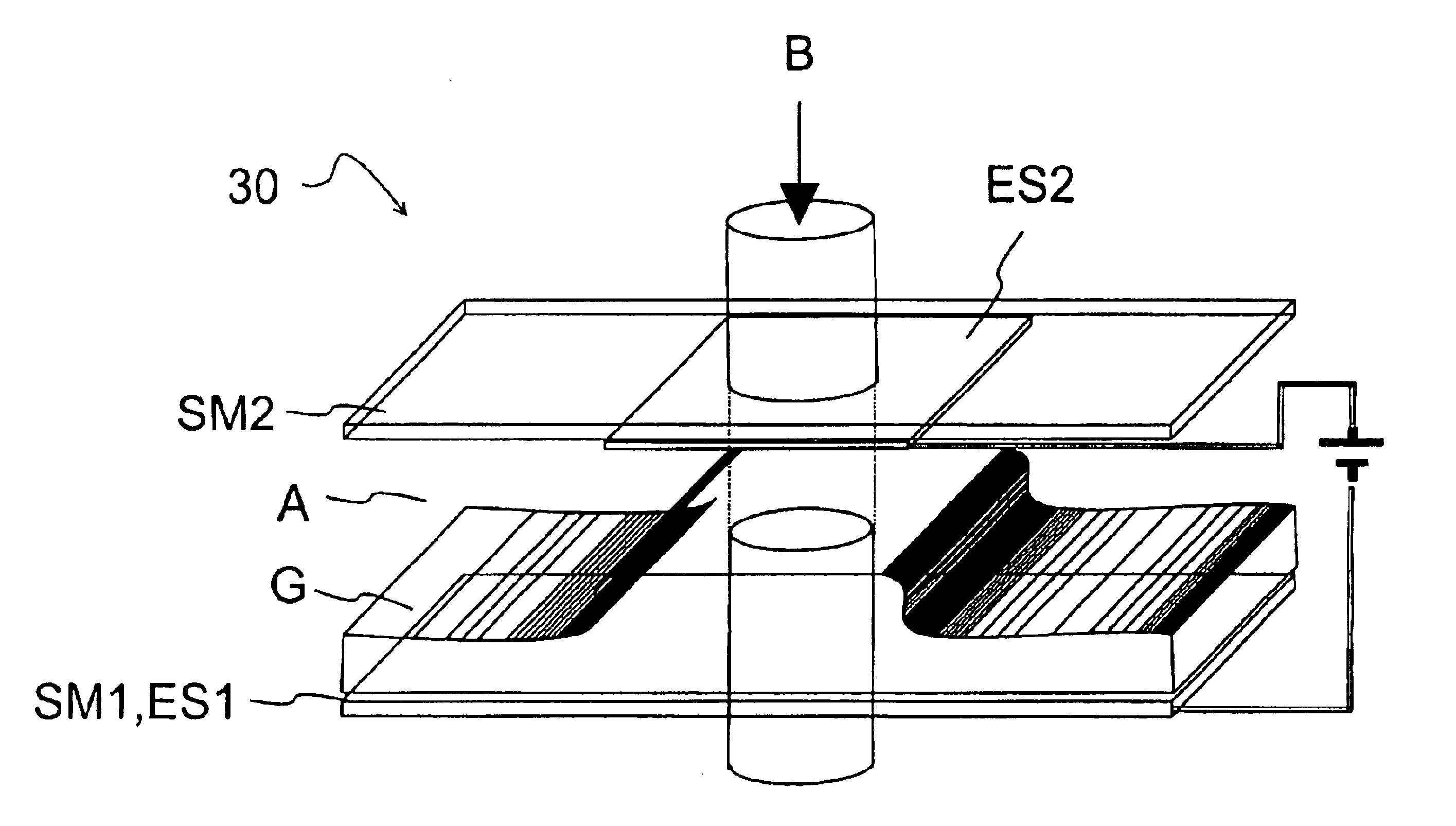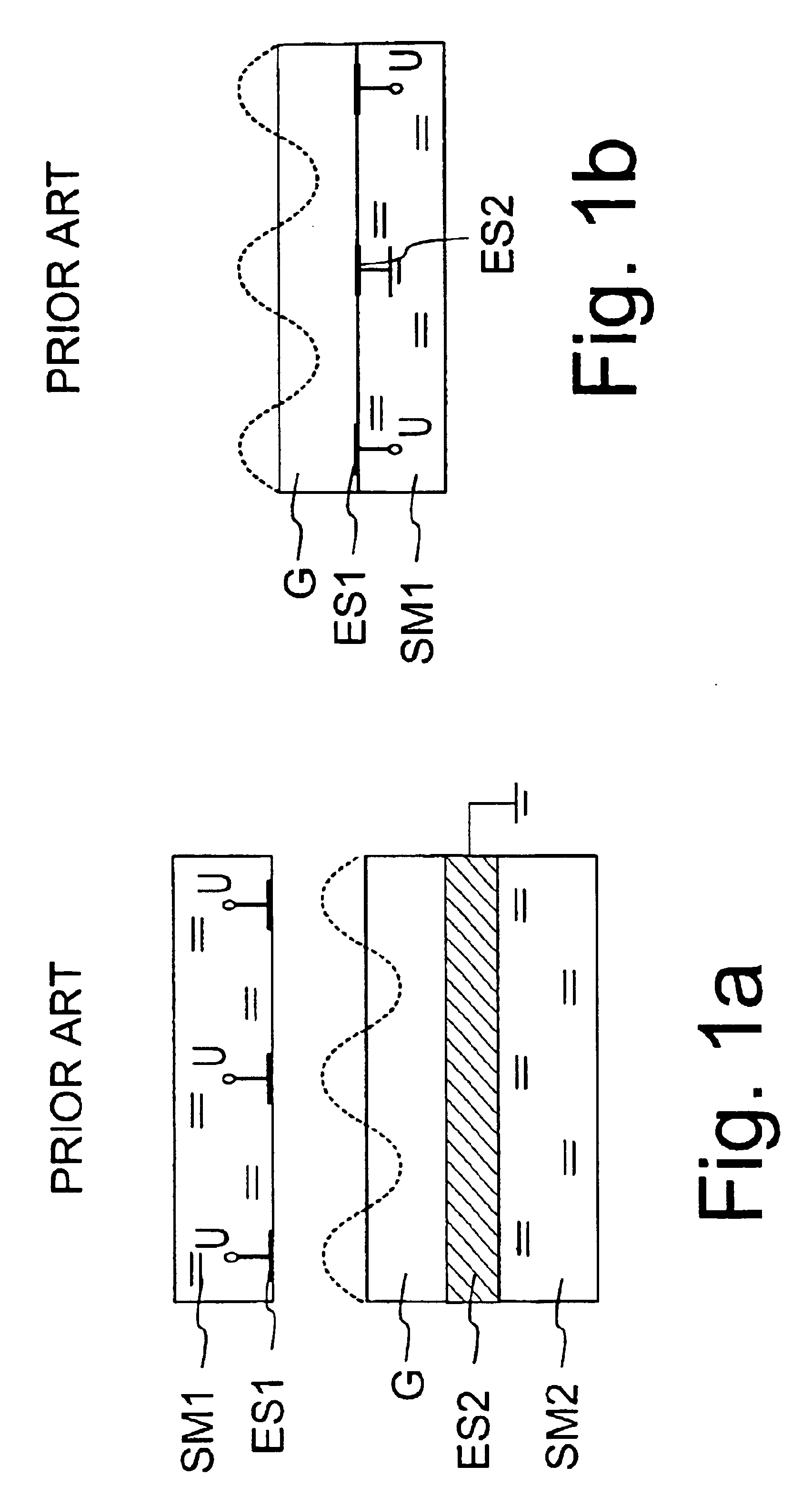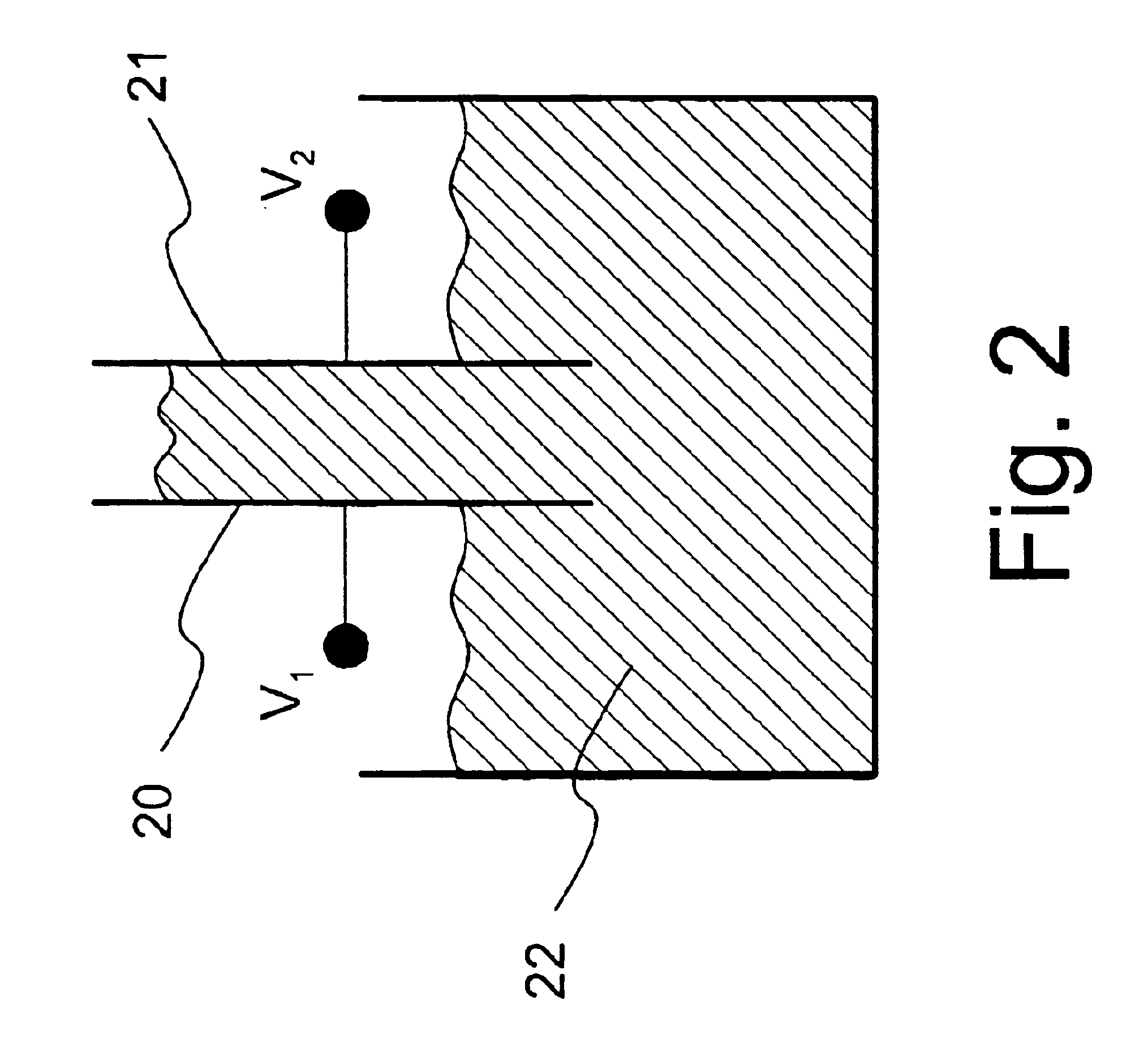Electrically controlled variable thickness plate
a variable thickness, electric control technology, applied in the direction of optics, instruments, optical elements, etc., can solve the problems of difficult and expensive manufacturing, difficult and expensive to manufacture, and the inability to easily make the optical components and the required electrical actuators very compact in size,
- Summary
- Abstract
- Description
- Claims
- Application Information
AI Technical Summary
Benefits of technology
Problems solved by technology
Method used
Image
Examples
Embodiment Construction
[0040]It is to be understood that the drawings presented hereinbelow are designed solely for purposes of illustration and thus, for example, not for showing the various components of the devices in their correct relative scale and / or shape. For the sake of clarity, the components and details which are not essential in order to explain the spirit of the invention have also been omitted in the drawings.
[0041]FIG. 2 illustrates the general principle of physics, which can be observed with dielectric substances. A dielectric substance can be defined as a substance in which an electric field may be maintained with zero or near zero power dissipation, i.e. the electrical conductivity is zero or near zero. In an electric field, the surface of two dielectrics with different dielectric constants is known to experience a force which is proportional to the square of the electric field strength. In FIG. 2 where an electric field is formed between electrode plates 20 and 21 of a field capacitor b...
PUM
| Property | Measurement | Unit |
|---|---|---|
| total area A1 | aaaaa | aaaaa |
| voltage | aaaaa | aaaaa |
| voltages | aaaaa | aaaaa |
Abstract
Description
Claims
Application Information
 Login to View More
Login to View More - R&D
- Intellectual Property
- Life Sciences
- Materials
- Tech Scout
- Unparalleled Data Quality
- Higher Quality Content
- 60% Fewer Hallucinations
Browse by: Latest US Patents, China's latest patents, Technical Efficacy Thesaurus, Application Domain, Technology Topic, Popular Technical Reports.
© 2025 PatSnap. All rights reserved.Legal|Privacy policy|Modern Slavery Act Transparency Statement|Sitemap|About US| Contact US: help@patsnap.com



